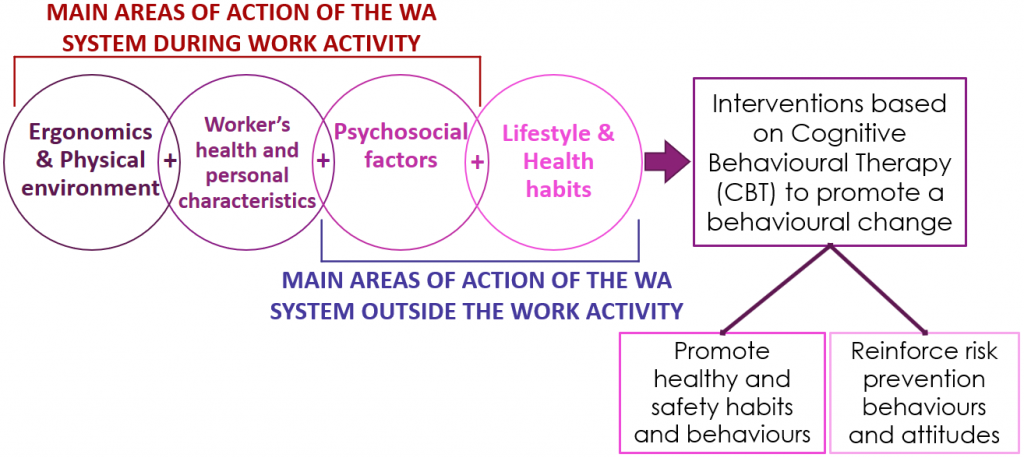Text by: Rosa Almeida – Participatory Design Manager – INTRAS; Adriana Grau – Psychologist – INTRAS; Mª José Hernández – Project Manager – INTRAS
The increase in longevity together with the decrease in fertility rates and, with it, the reduction of new incorporations in the labour forces of many industrialized countries, has led European governments to face the need to increase the full retirement ages by prolonging people’s working career (Bielecki, 2016).
In this context, sustainable work ability throughout the life course is a key factor, especially in advanced ages, in allowing and ensuring a long career and healthy aging (Nygard, 2020). Alcover et al. (2014) already underlined the importance of self-perceived ability to continue performing one’s functions at work as an indispensable factor for the continuity in active of an older worker. The declines in work ability during aging may be explained by work-related factors, as well as general lifestyle. These three aspects, work ability, work related factors and lifestyles and health related habits, must be taken into consideration when developing a program to promote sustainable and prolonged employment, as well as to preserve the health and guarantee the well-being as the workforce ages.
Taking into account the above challenges, the WorkingAge project is developing an intervention program, based on an e-coach system of interaction with older workers, to prolong their work ability and autonomy, and promote wellbeing throughout all areas of their lives.
For the design of interventions, and other actions and interactions of the system with the user, the WorkingAge project maintains a holistic and comprehensive approach to the individual. For this purpose, the scope of the intervention design is not limited to the work environment, but also includes within its area of action the worker’s life outside of work.

INTRAS and other WA partners have been working on the definition of learning models to perform monitoring analysis of data. That allows the system to select the intervention most suitable for promoting healthy ageing and determine the best moment to apply the recommended “intervention/ WA action pieces”. This is, we are defining the intervention methodology by developing an approach capable to help the system to identify “which” piece of intervention, “when” and “how” to launch it to the user through the WAOW (“WorkingAge of Wellbeing”) tool.
The aim of the WAOW tool is to reduce strain in different working conditions. INTRAS has provided a structured approach for designing interventions according to evidence-based approaches and best practices known. This Intervention Model is based on three pillars: i. framework for stress and strain assessment and intervention; ii. SMART GOALS and Intervention Model for user behavioral change and assessment; and iii. the Recommendatory System which interventions proposed are defined according to evidence-based criteria.

Once the intervention plan of the WAOW tool is developed, it will be tested in real environments, with real professionals and workers, to evaluate its effectiveness and its ability to promote healthy and safe living and working habits. The final aim of the WAOW intervention program is to assist older workers to stay healthy and active for longer, allowing them to postpone their retirement and prolonging their independence and autonomy for as long as possible.
References:
Marcin Bielecki, Karolina Goraus, Jan Hagemejer, Joanna Tyrowicz (2016). Decreasing fertility vs increasing longevity: Raising the retirement age in the context of ageing processes, Economic Modelling, Volume 52 (Part A), 125-143.
Nygard, C. H. (2020) Preface to “Sustainable Work Ability and Aging”. International Journal of Environmental Research and Public Health. Pg. ix-x.
